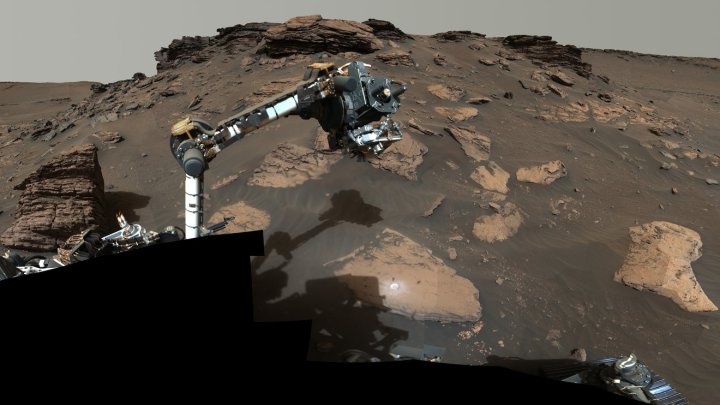The Perseverance rover has made an exciting discovery on Mars, identifying the building blocks of life in a sample from an area of the Jezero crater where there was once plentiful liquid water. The organic molecules it discovered can be formed in various ways including non-organic processes, so they aren’t proof that life once existed there — but they do show that life could potentially have thrived there millions of years ago.

As the Perseverance rover continues its explorations of the Jezero river delta for its second science campaign (the first science campaign was the exploring of the Jezero crater floor), it has been collecting samples as it goes. One particularly exciting sample was collected from a 3-foot wide outcrop rock named Wildcat Ridge, which the rover collected on July 20.
When the sample from Wildcat was studied using Perseverance’s SHERLOC (Scanning Habitable Environments with Raman & Luminescence for Organics & Chemicals) instrument, researchers discovered that the sample included organic molecules. These building blocks of life have previously been discovered on Mars by the Curiosity rover in the Gale Crater, but in the case of the recent finding, the molecules were found in the sedimentary rock close to sulfate minerals that form in water.
“In the distant past, the sand, mud, and salts that now make up the Wildcat Ridge sample were deposited under conditions where life could potentially have thrived,” Perseverance project scientist Ken Farley said in a statement. “The fact the organic matter was found in such a sedimentary rock – known for preserving fossils of ancient life here on Earth – is important. However, as capable as our instruments aboard Perseverance are, further conclusions regarding what is contained in the Wildcat Ridge sample will have to wait until it’s returned to Earth for in-depth study as part of the agency’s Mars Sample Return campaign.”
NASA hopes to bring the samples collected by Perseverance back to Earth through its Mars Sample Return mission in the 2030s, enabling in-depth study of the martian samples.
“I’ve studied Martian habitability and geology for much of my career and know first-hand the incredible scientific value of returning a carefully collected set of Mars rocks to Earth,” said Laurie Leshin, director of NASA’s Jet Propulsion Laboratory. “That we are weeks from deploying Perseverance’s fascinating samples and mere years from bringing them to Earth so scientists can study them in exquisite detail is truly phenomenal. We will learn so much.”



